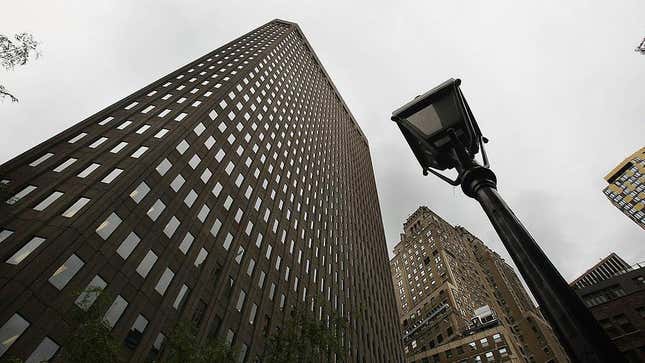
As employees shift to working outside the office, some Manhattan developers are considering turning their office towers into apartment buildings.
The latest high-profile example? The former headquarters of Goldman Sachs, in the heart of the Financial District. That building, which went up in the 1980s and counts WeWork and Oppenheimer as tenants, has a vacancy rate of about 20%, Bloomberg reported.
Vacancy rates like that aren’t sustainable for most big-city office towers. But converting them to residential housing isn’t always the simplest solution. Jessica Morin, head of office research at CBRE Americas, a commercial real estate firm, said the problem is the availability of affordable housing in the US. Developers want to convert their projects into luxury apartments to cover costs. But the demand for such luxury living is just not there.
So while the number of office-to-apartment conversions in the US is expected to more than double, from 11 this year to 34 in 2023, according to CBRE, that’s a tiny portion of the overall office market, which includes both large office towers and smaller developments. The 89 total housing conversions Morin’s company has identified since 2016 amount to fewer than 15,000 units.
The pros and cons of converting offices into residences
The biggest perk for developers to turn an office property into rental units is the speed at which it can be done. There’s no need to demolish the property, and there’s less labor needed to convert the building into housing, compared to tearing down the property and building it back up.
That said, doing so is costly.
For a lot of these deals to work out, the property owner must be willing to sell the office building for the land value only, since the value for the developer is in the land, and not the building, said Morin. In general, the cost of the office per-square-foot would have to drop below $100, but most office-building owners are not interested in selling at that point, Morin said.
Then there’s just the very act of turning large office floors into multiple livable spaces. Each apartment unit needs windows and light (not to mention plumbing) to turn these buildings into desirable places to live, forcing developers to gut the inside of massive office buildings, Morin said.
Then, there’s also the regulatory hurdles. Some cities, like New York, restrict the place and type of building that may convert to residential.
The role incentives and regulations play
It’s not all bad news. The uptick in office-to-housing conversions suggests government incentives are motivating developers. For example, office-to-residential projects are moving ahead in so-called opportunity zones, where investors can receive tax benefits. In some places, other tax credits, such as historical preservation tax credits or national tax credits, also help developers profitably turn offices into apartments.
The gap between the average price per square foot of residential and office rental space has narrowed over the years, from 12% in 2009 to 8.6% in 2022, according to JLL, a commercial real estate firm. That could help improve the economics of conversions. Lawmakers on both the local and federal level are also looking at legislation that might improve the economics of conversions.
“This topic is going to get a lot more attention,” Morin said. “We’ll start to see policies that really remove the red tape or even help subsidize these projects to make them more attractive to developers, especially, as we see vacancy rise.”